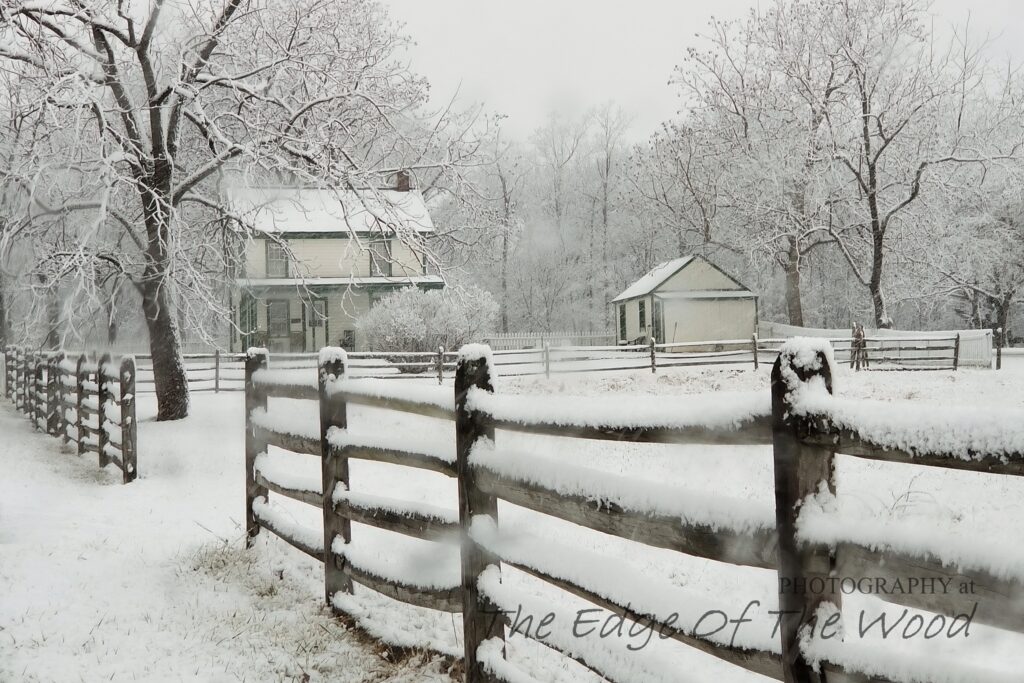
(Click the Play arrow to listen to this column.)
This week started with snow falling gently on the Couple Acre Wood. Outside my window, half-inch gray branches turned white, two inches and getting fatter.
The pup seemed not quite as confused as the first time he encountered snow. I watch him romp in the six-inch blanket, acting as though he’s not sure where it came from or why, occasionally looking back at me as though to ask, “what is this stuff?”
But it’s soft and he can smell the neighbor’s cats, so it’s all good.
My boots crunch the frozen ground through the snow. Walking atop the ice crystals is like wandering on a sandy beach, except noisier. And colder as the wind begins to make itself felt.
I used to wonder what it would feel like to be old enough to say to my younger self, “When I was your age …”
For instance, “When I was your age” I had to walk to school, three miles each way. At this point, I would add, “uphill, both ways,” — but it’s true. There were three hills along the first stretch of road leading out of town: up, down, up, down, up, down, to the end of the lake, where I lived on the other end. Walking those forest-walled hills was like walking between buildings in a city.
Jack Howard and Irving Holbrook owned the two trucks used to plow snow. The town bought the plows the trucks carried and the gas they burned. The two men, like many in rural towns, were well familiar with “diversification.” The same trucks that pushed snow in winter helped build roads and haul other farm materials at the other end of the calendar.
The men did not start their engines until there was at least three inches of new snow on the ground and still coming down heavily. Small storms would pack down and make some of the town’s roads better than they were in summer, so plowing was considered counterproductive.
When it was time to head out, Mr. Howard took the south side starting at the town office, and Mr. Holbrook headed north. About six hours later, they would meet back at the office. At least, that was the plan. In the days before CB radios and mobile telephones, the way you knew there was trouble was if one driver was back at the office and the other one wasn’t. Then phones would start ringing and folks would look out their windows to see where the plow had last cleared snow.
A story is told about the night Jack was up on Barker Road in a blizzard and he could barely see the trees at the side of the road. Watching the trees was the only way he knew he was still on the road — except in one place along the ridge where if you got too close to the trees you’d roll your truck down the side of the mountain.
Driving in a whiteout created by blowing snow down from the sky and up from the plow blade, Jack became suspicious that the distance to the stop sign at the bottom of the hill had become too long. He stopped the truck and waited for the swirling snow to settle down.
Finally, in a space between wind gusts, he realized his error. He was no longer on the road. At some point he had left the road and now found himself in the middle of a pasture.
These days, I chuckle each time a television weather prognosticator makes mention of “plowable snow.” It strikes me as one of those political-style phrases in which the speaker wants listeners to hear something he is not saying, and to create deniability when they wake the next morning and discover what they thought they heard him say was not what happened.
But the weather-guesser said it would be cold, and by Monday night, just walking through seemingly still air set the personal wind chill at about 5-below. The pup, being closer to the ground, seems not to feel the effects, He must think me a wimp because I won’t stay out as long as he would like.
When I was his age, I didn’t know it was cold, either.
Text & images ©2025 John Messeder. John is an award-winning environmental storyteller, nemophilist and social anthropologist, and lives in Gettysburg, PA. He may be contacted at john@johnmesseder.com
